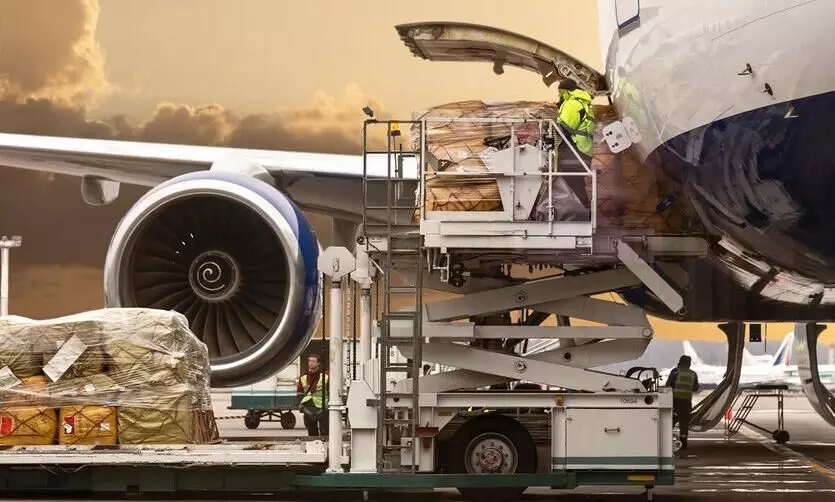
Asia-Pacific airfreight soars amid tariff shifts and peak season demand
According to Dimerco’s latest Asia-Pacific Freight Market Report, airfreight is benefiting from a surge in high-value technology exports.

Air cargo markets across Asia-Pacific are entering September with strong momentum, as peak-season demand intersects with shifting trade patterns fuelled by new tariff regimes and geopolitical uncertainty. According to Dimerco Express Group’s latest Asia-Pacific Freight Market Report, airfreight is benefiting from a surge in high-value technology exports, particularly from Southeast Asia.
The recent expansion of Section 232 tariffs in the US, which now covers an additional 407 derivative steel and aluminium products at a 50% duty rate, coupled with a 25% reciprocal tariff on Indian exports, has created fresh disruptions across supply chains.
At the same time, Canada’s elimination of tariffs on US goods from September 1 has introduced further complexity, incentivising exporters to adopt agile logistics strategies. Against this uncertain backdrop, exporters of time-sensitive, tariff-impacted commodities are turning to airfreight to guarantee speed and predictability.
The centre of gravity in regional air cargo has clearly shifted from China towards Southeast Asia, with exports from Vietnam, Thailand, and Malaysia outpacing Chinese volumes for the first time in a peak season. Demand is being fuelled by a surge in AI servers, consumer electronics, and other high-tech hardware.
Airlines have expanded capacity on transpacific eastbound lanes to accommodate this shift, but constraints remain acute at gateway hubs like Hanoi, Penang, and Singapore. Limited capacity and space constraints have forced some shippers onto indirect routings, often at higher cost, further highlighting how valuable dependable shipping space is in today’s market.
"With the rising demand and potential tight capacity, Shanghai Pudong (PVG) airport is timely equipped with their direct transfer service. This service allows cargo to connect between different airlines within the PVG terminal without using bonded ‘U-turn’ facilities. It adds much-needed capacity during the peak season and helps ease pressure at origins such as Hanoi, Ho Chi Minh City, Bangkok, and Penang for US and European lanes," stated Kathy Liu, VP, Global Sales and Marketing, Dimerco Express Group.
Services from Taipei into the US remain crowded, with urgent shipments of AI-related products competing for space on direct flights, while general cargo is increasingly routed via secondary hubs where congestion is mounting.
Market developments across North and South Asia are also reshaping the regional logistics landscape. In North China, volcanic activity in August disrupted flight paths and temporarily constrained transpacific capacity, though conditions are expected to normalise this month.
At the same time, Xi’an’s new thrice-weekly freighter link to Chicago provides an important addition to China–US capacity diversification. In South China, DHL has resumed its Shenzhen–Los Angeles–Cincinnati service, and China Southern has launched a Guangzhou–Dhaka freighter connection, which will provide additional intra-Asia cargo capacity.
From India, exports have shown stability, but the newly imposed reciprocal tariff from the US threatens to slow demand in select commodity categories. Exporters are further contending with monsoon-related risks, amplifying the importance of protective packaging and pre-booking to safeguard schedules.
In Southeast Asia, Singapore has seen rate increases for long-haul services to the US, particularly for urgent shipments requiring fast turnarounds. Capacity constraints at key transit hubs such as Taipei are compounding the problem, with backlogs filtering into the broader network.
Penang is already deep in peak season, with shippers advised to plan for longer lead times and wider delivery buffers. Vietnam continues to push to the forefront of tech-driven exports, with robust flows of electronics from the north tightening direct US connections and pushing some shipments through secondary routing via Shanghai, where capacity remains more stable.
Across the broader airfreight market, fuel surcharges have held steady since mid-August, but cost pressures are expected to remain a factor as volatility in energy markets lingers. Shippers are being advised to secure capacity early, especially on transpacific sectors, where forward capacity bookings continue to run tight.
Overall, the outlook for the September–December window suggests that airfreight will stay firm, benefiting from tariff-driven trade realignment and strong seasonal uptake in high-tech exports.
In this environment, air cargo is emerging as the mode of choice for industries requiring speed and flexibility to counter tariff disruptions. While the geopolitical picture remains fluid—with another Section 232 review scheduled for September that could widen the tariff net further—the immediate picture for airlines and forwarders is one of sustained peak demand, elevated yields, and limited slack.
As Southeast Asia consolidates its lead as a manufacturing base for technology exports, the dynamics of transpacific air trade are being recalibrated around new sourcing geographies, and airfreight is positioned to remain the most resilient segment of the freight industry through the end of 2025.

